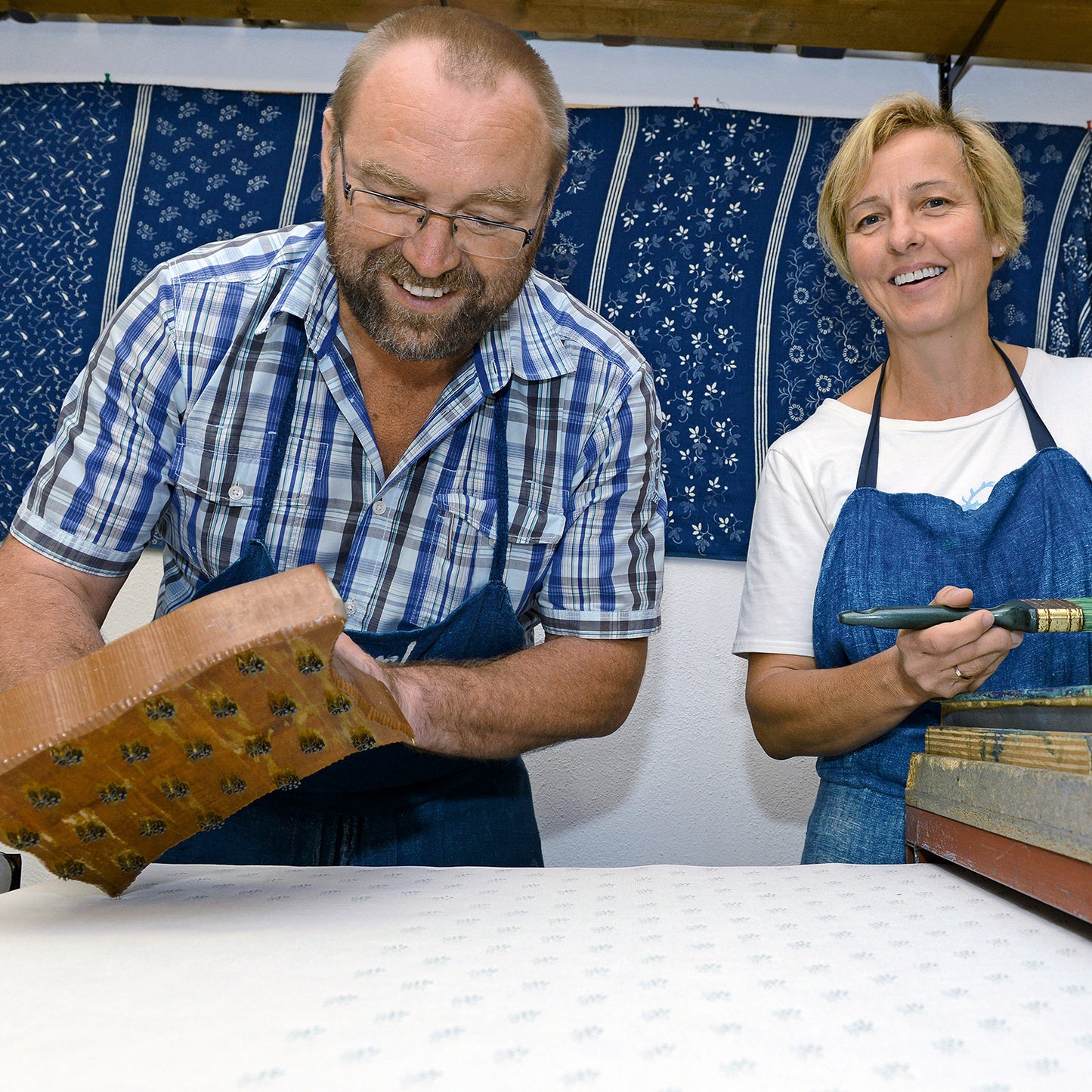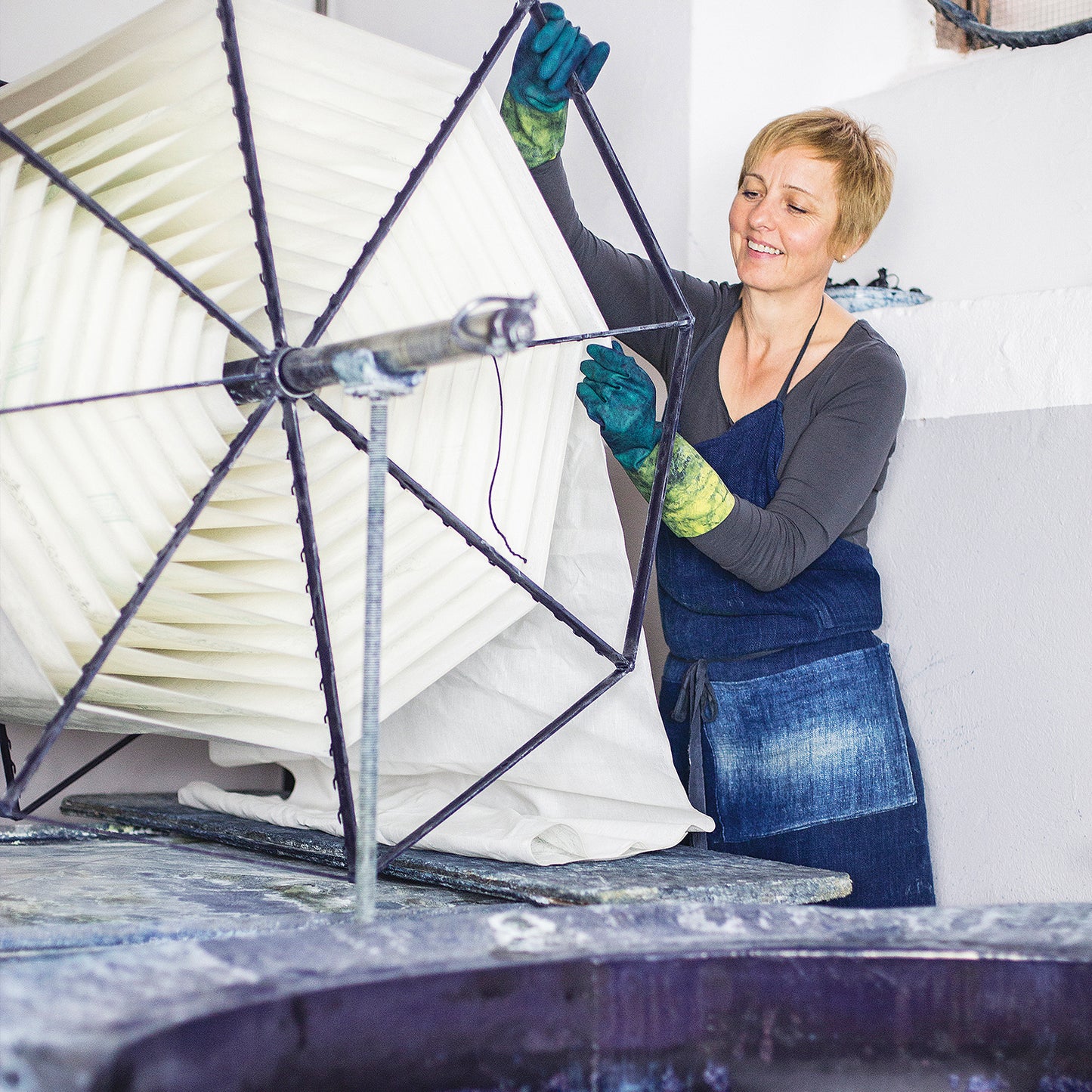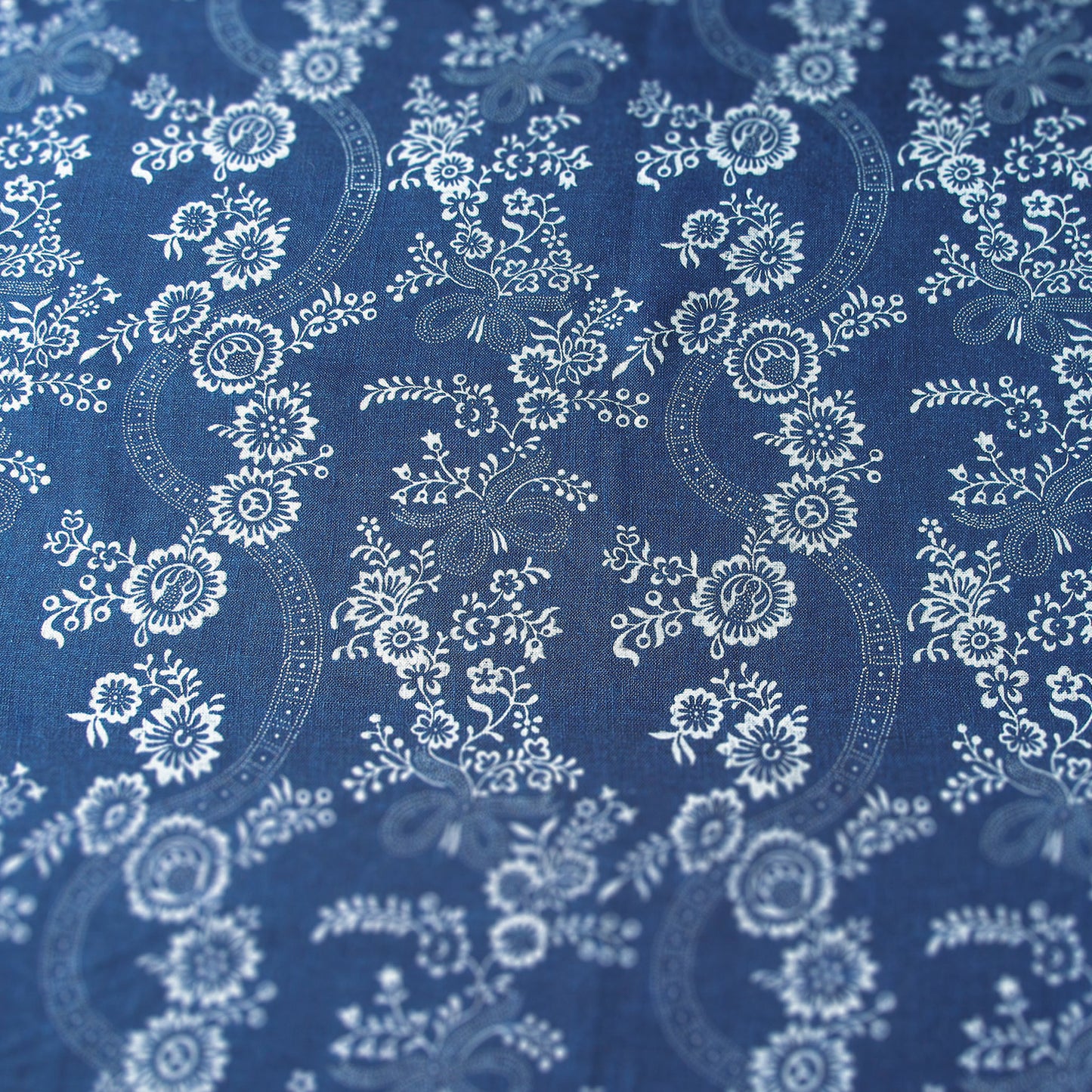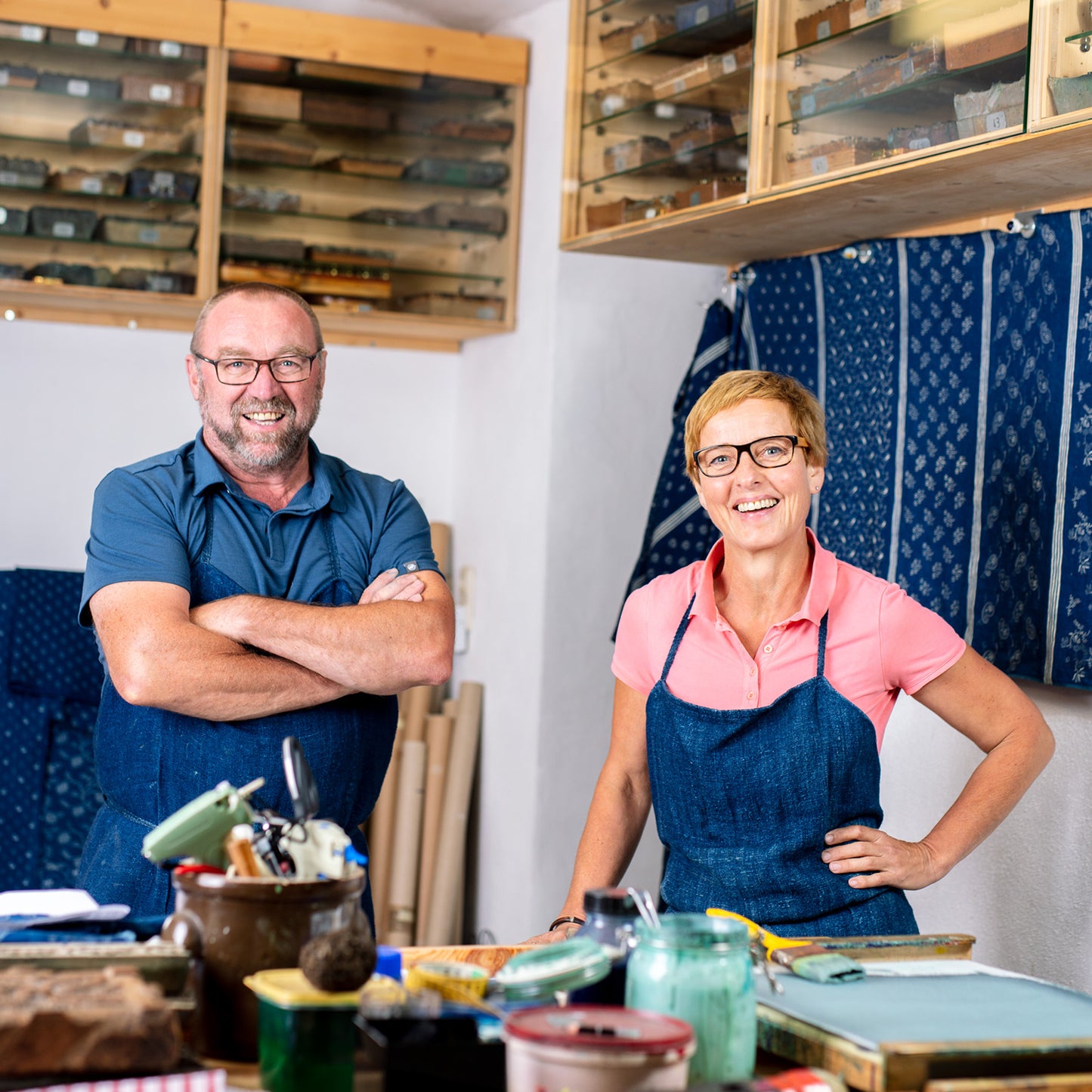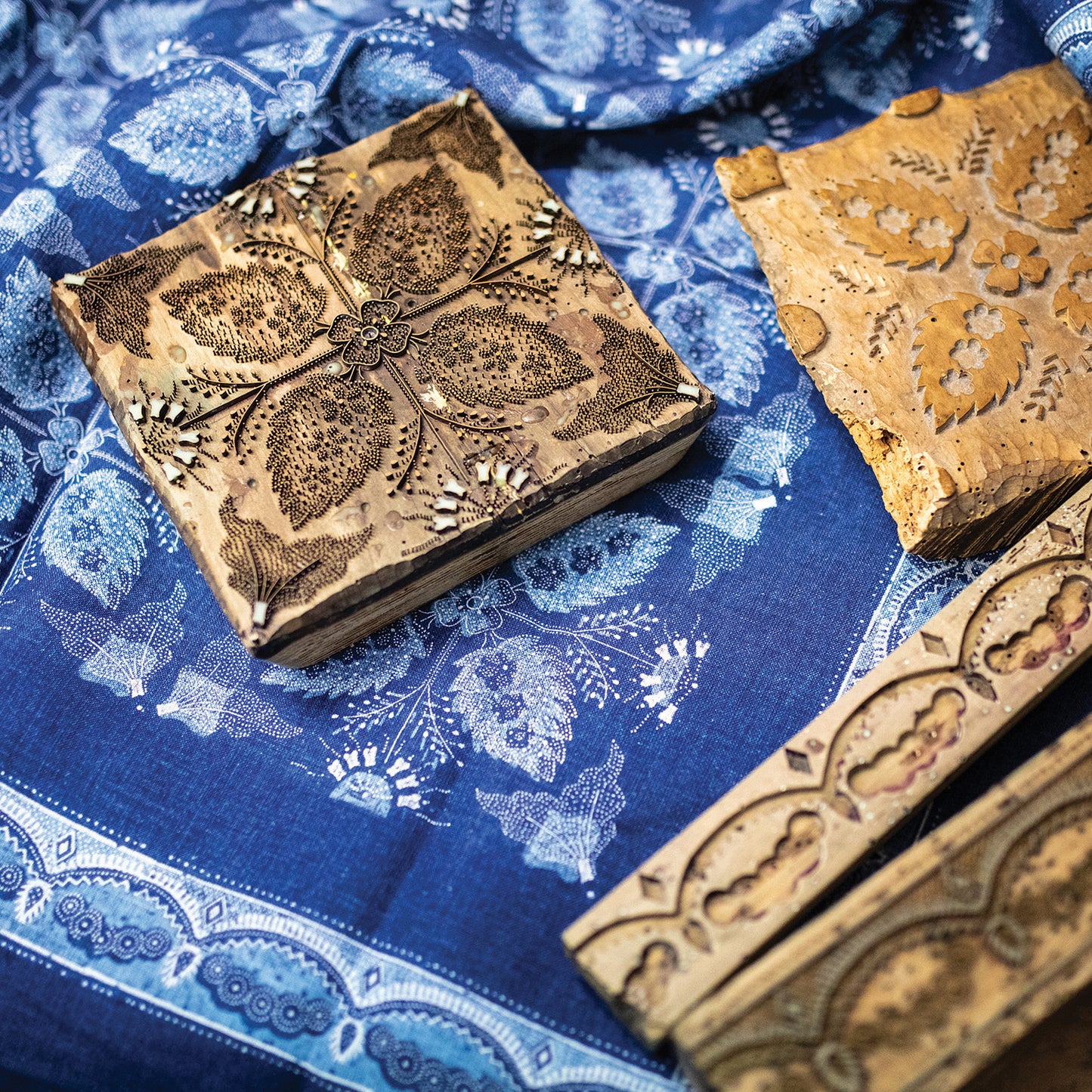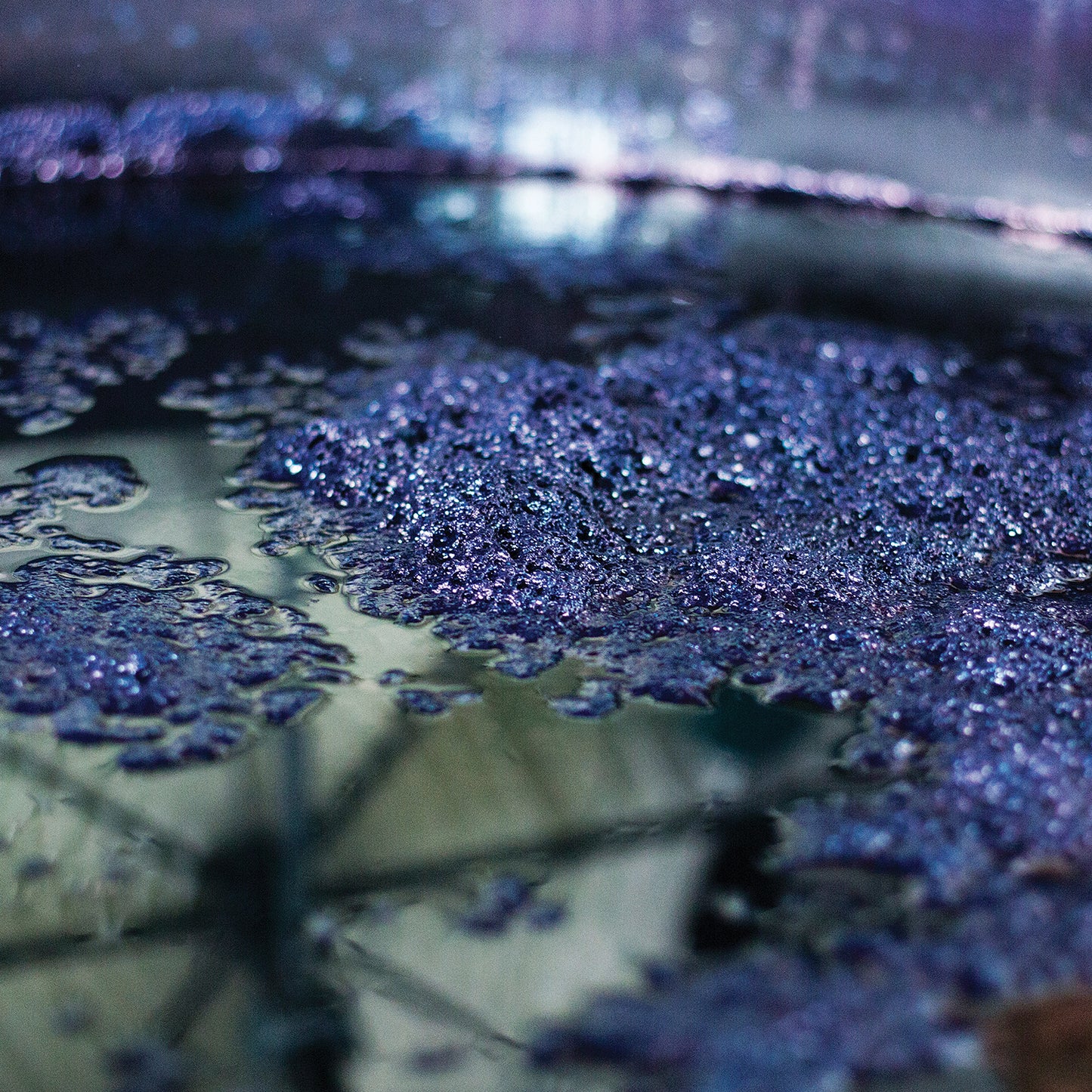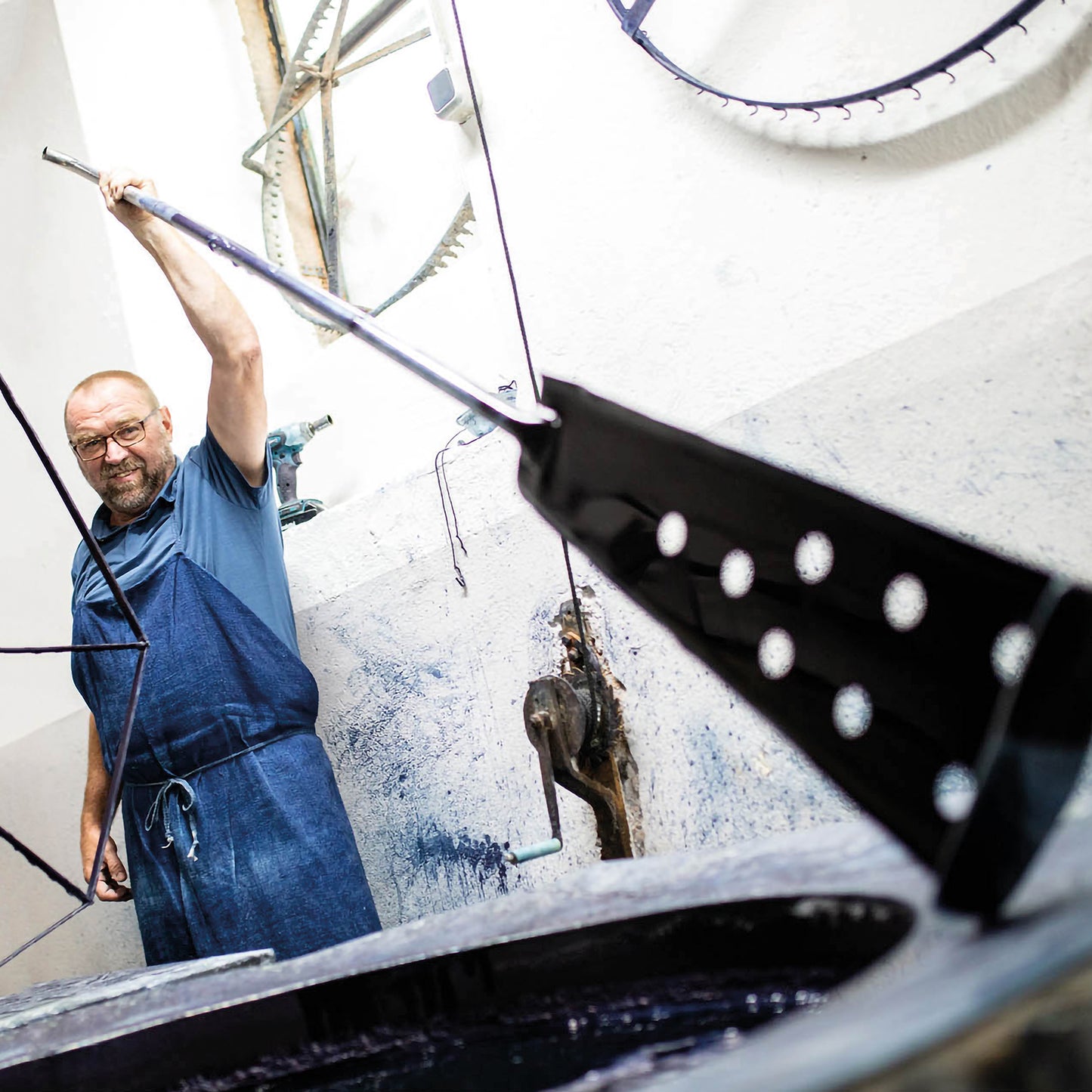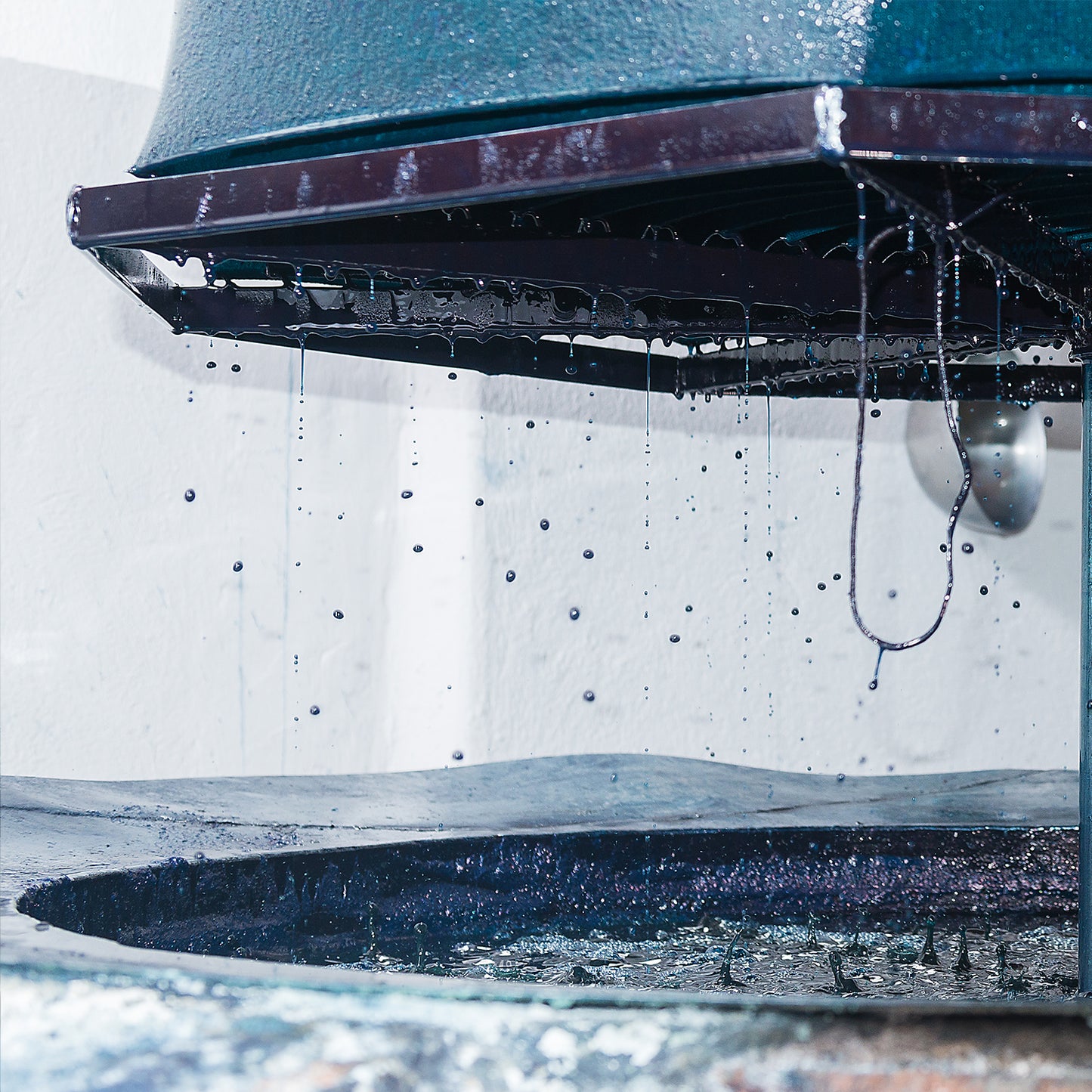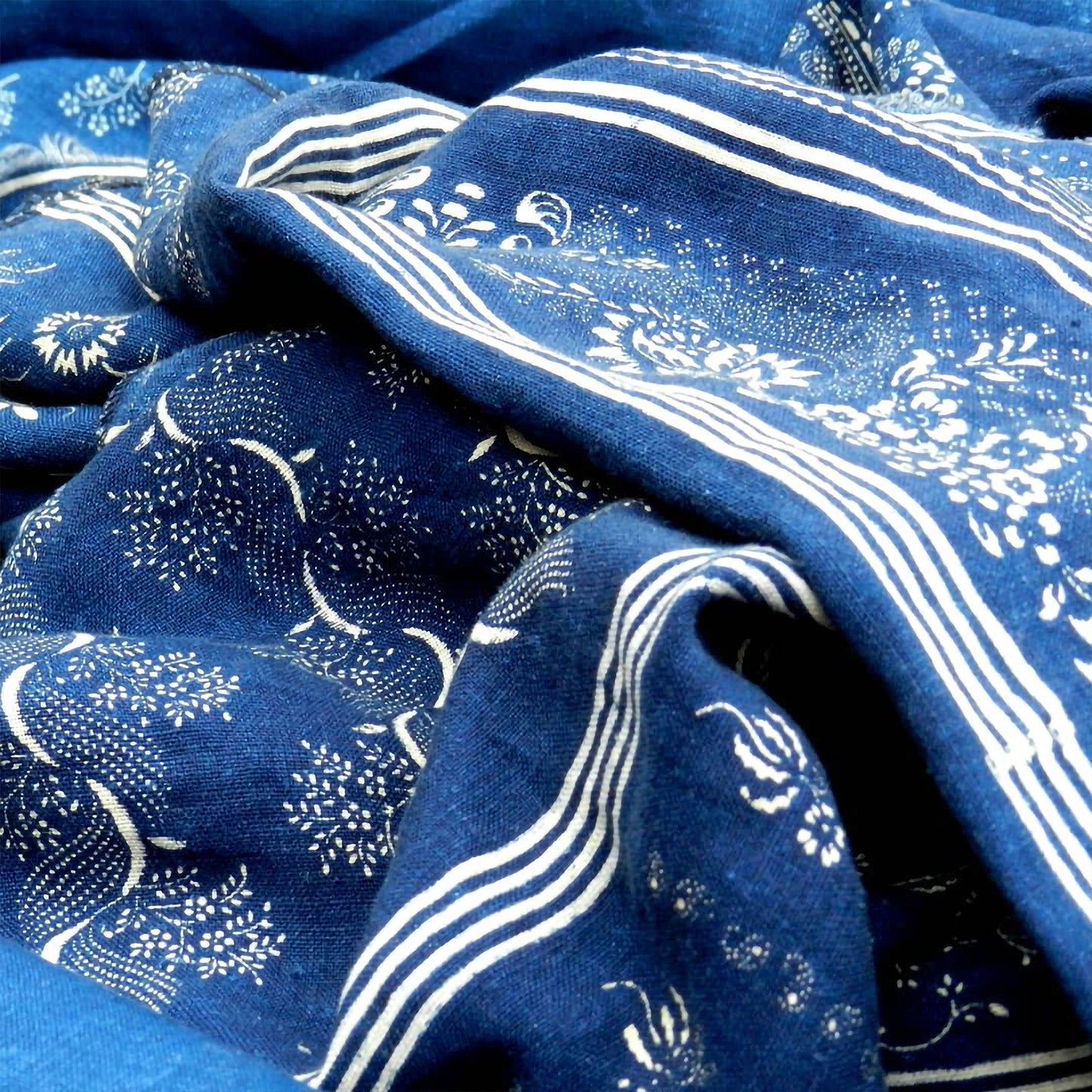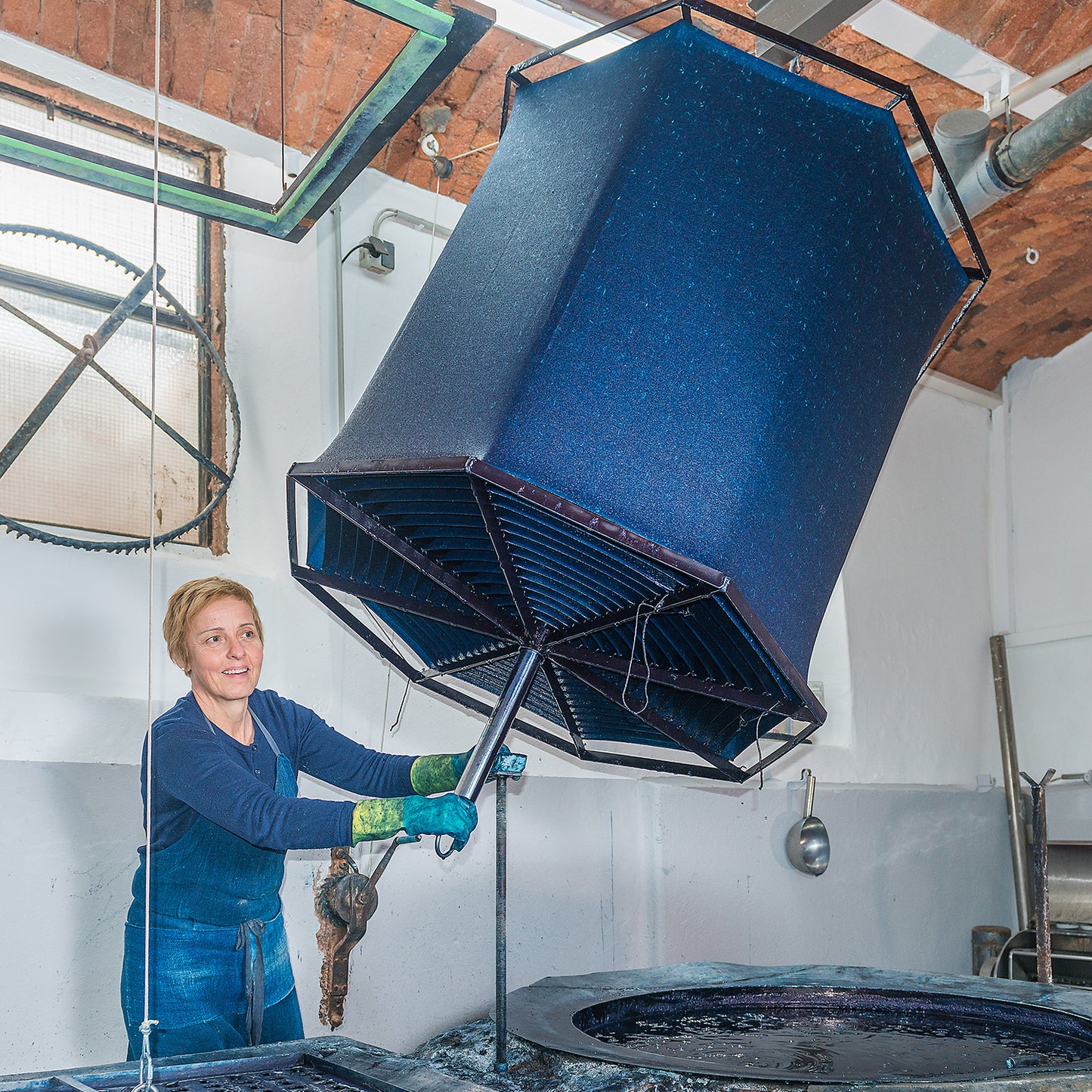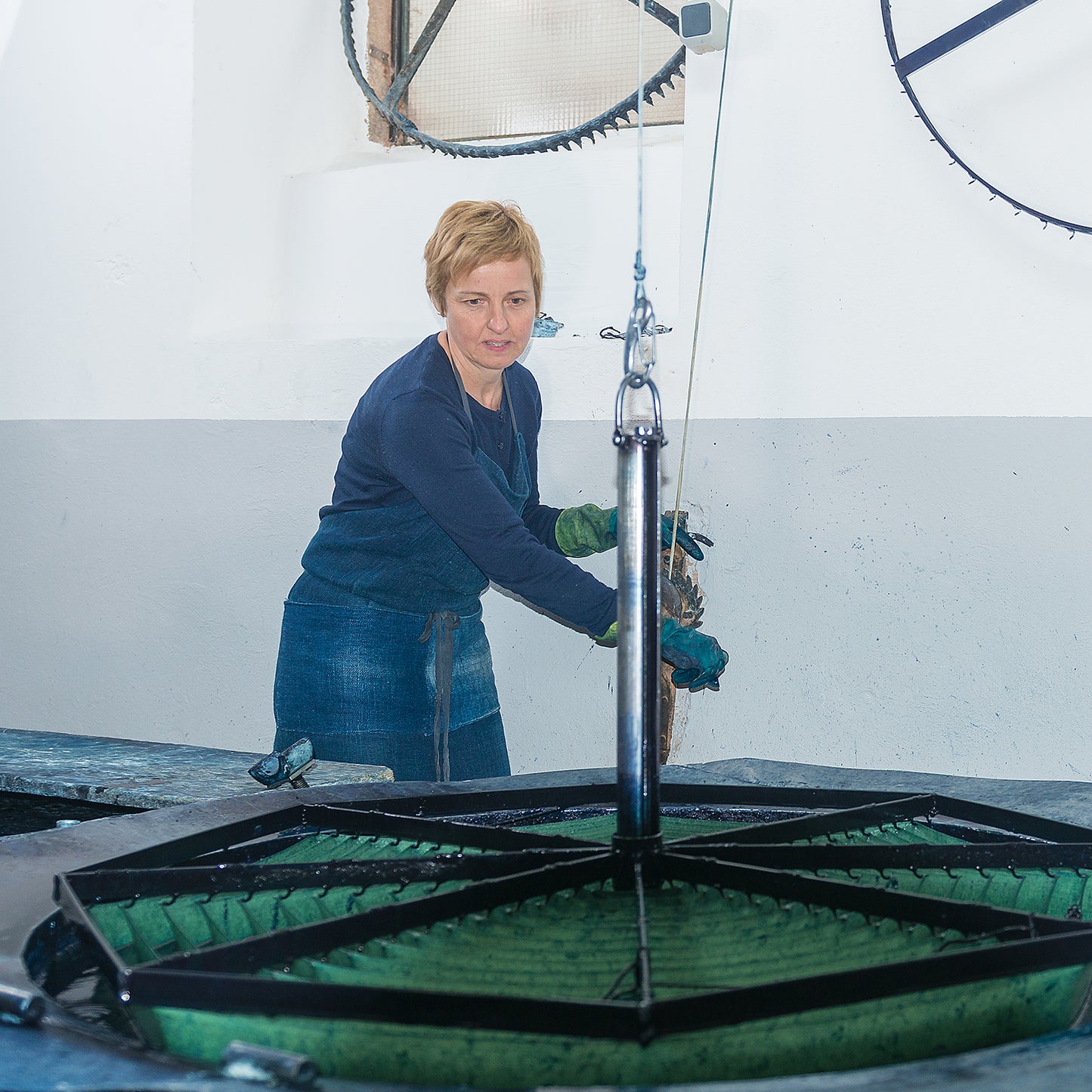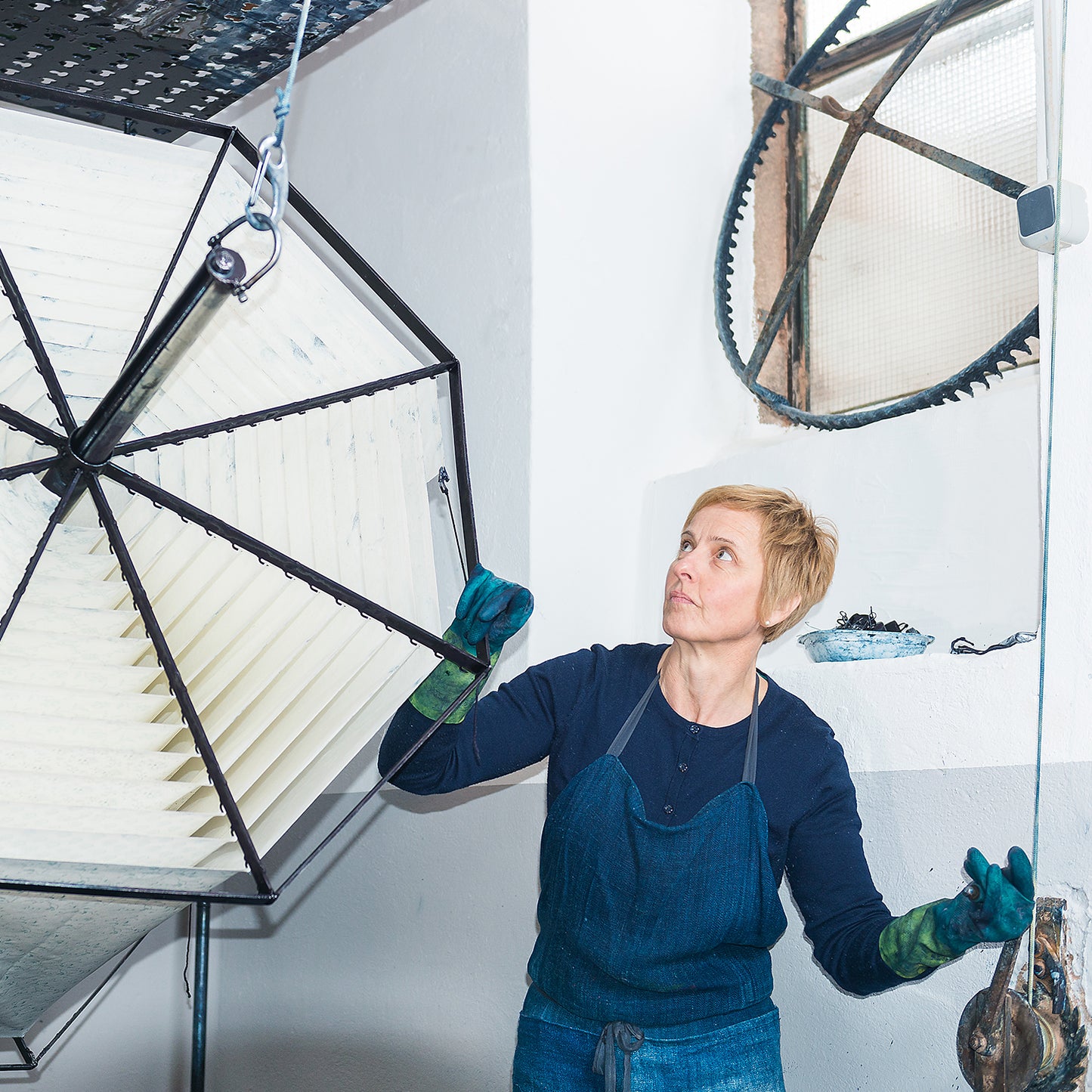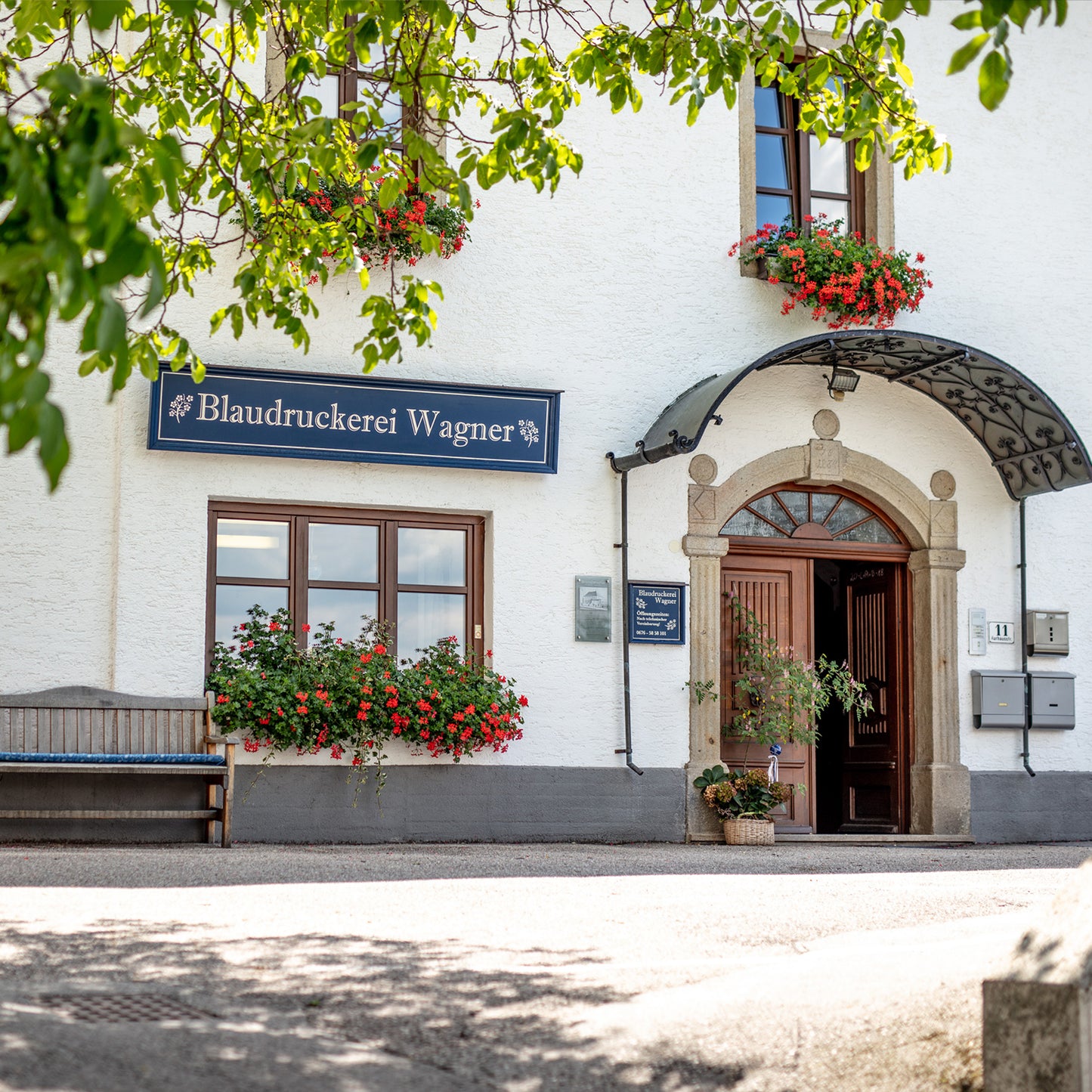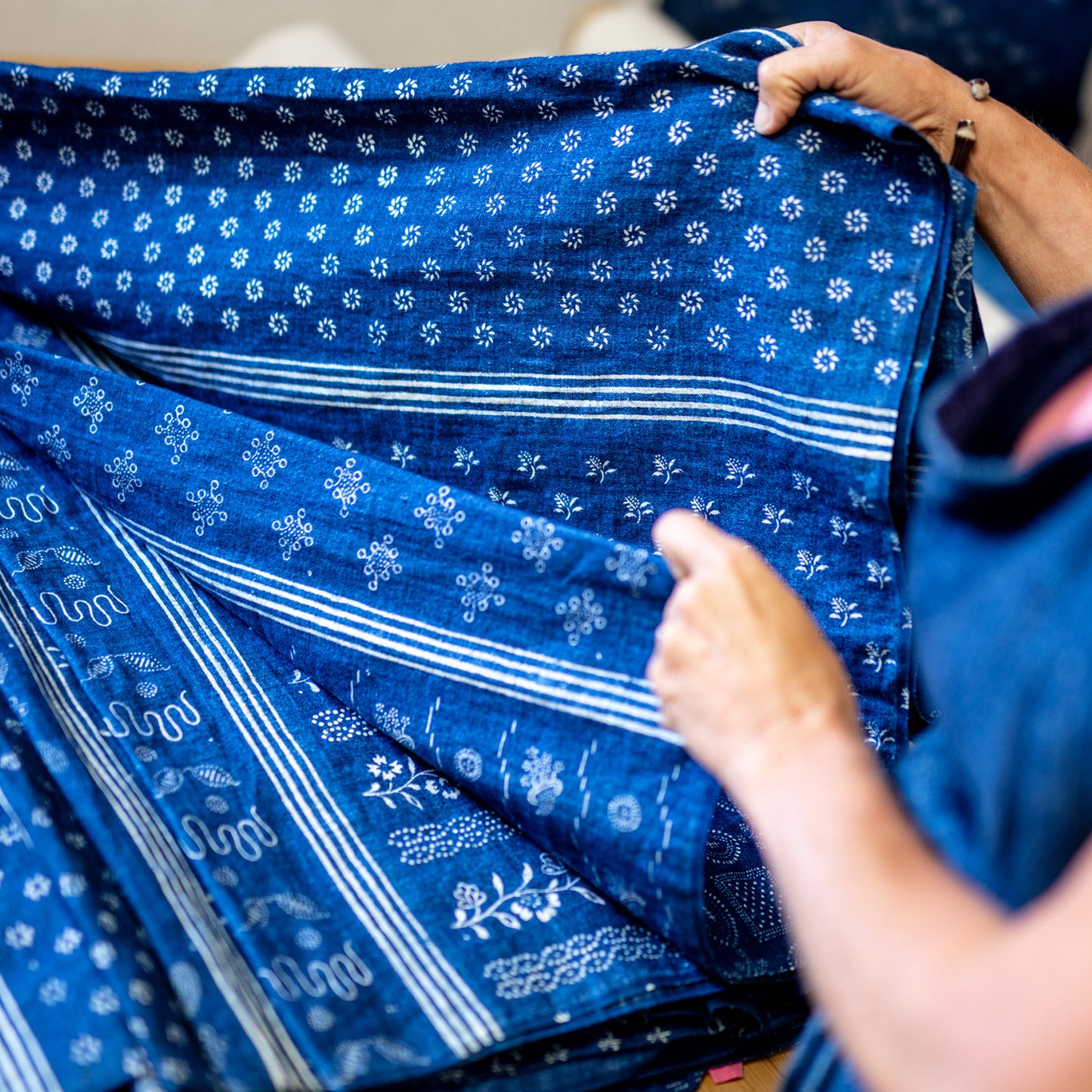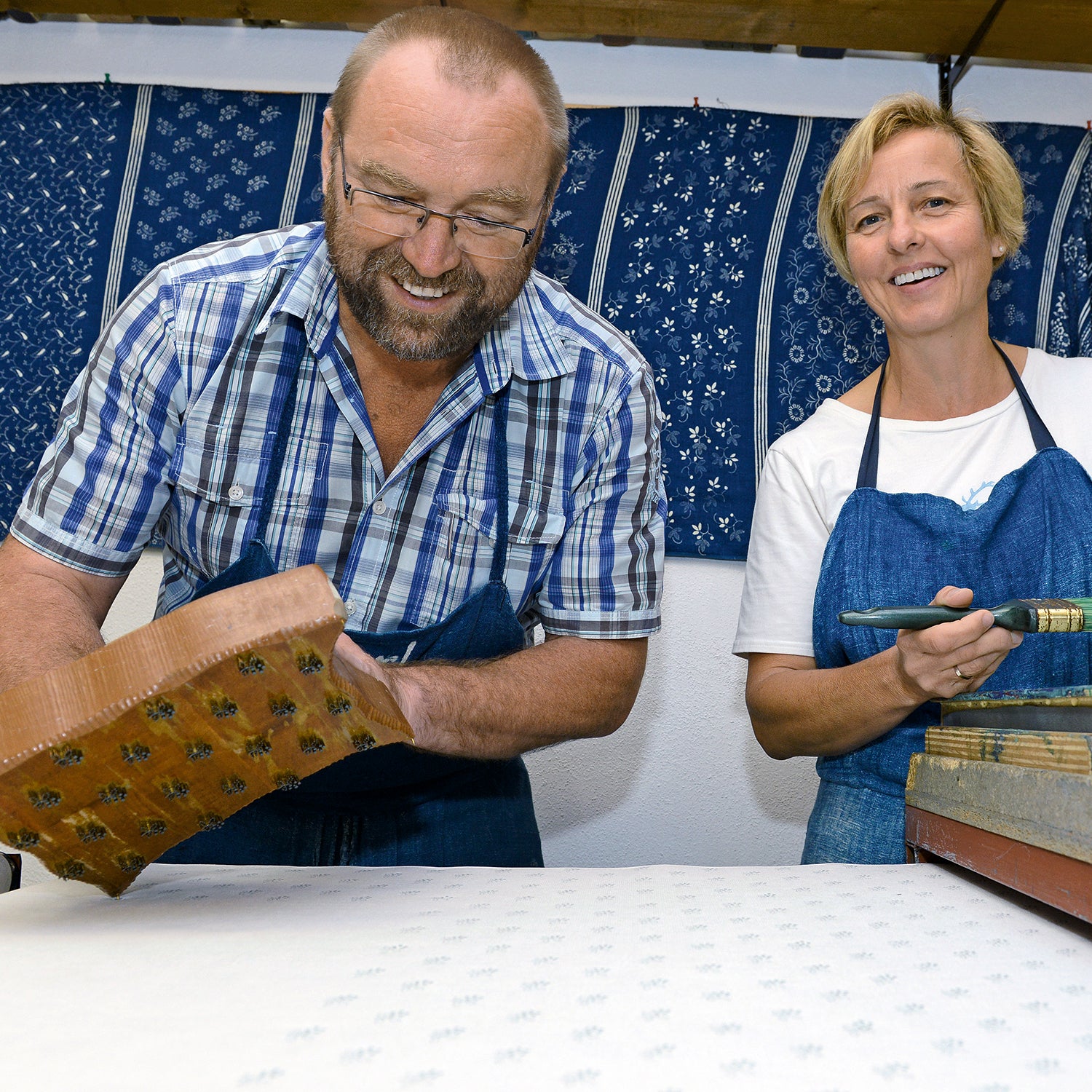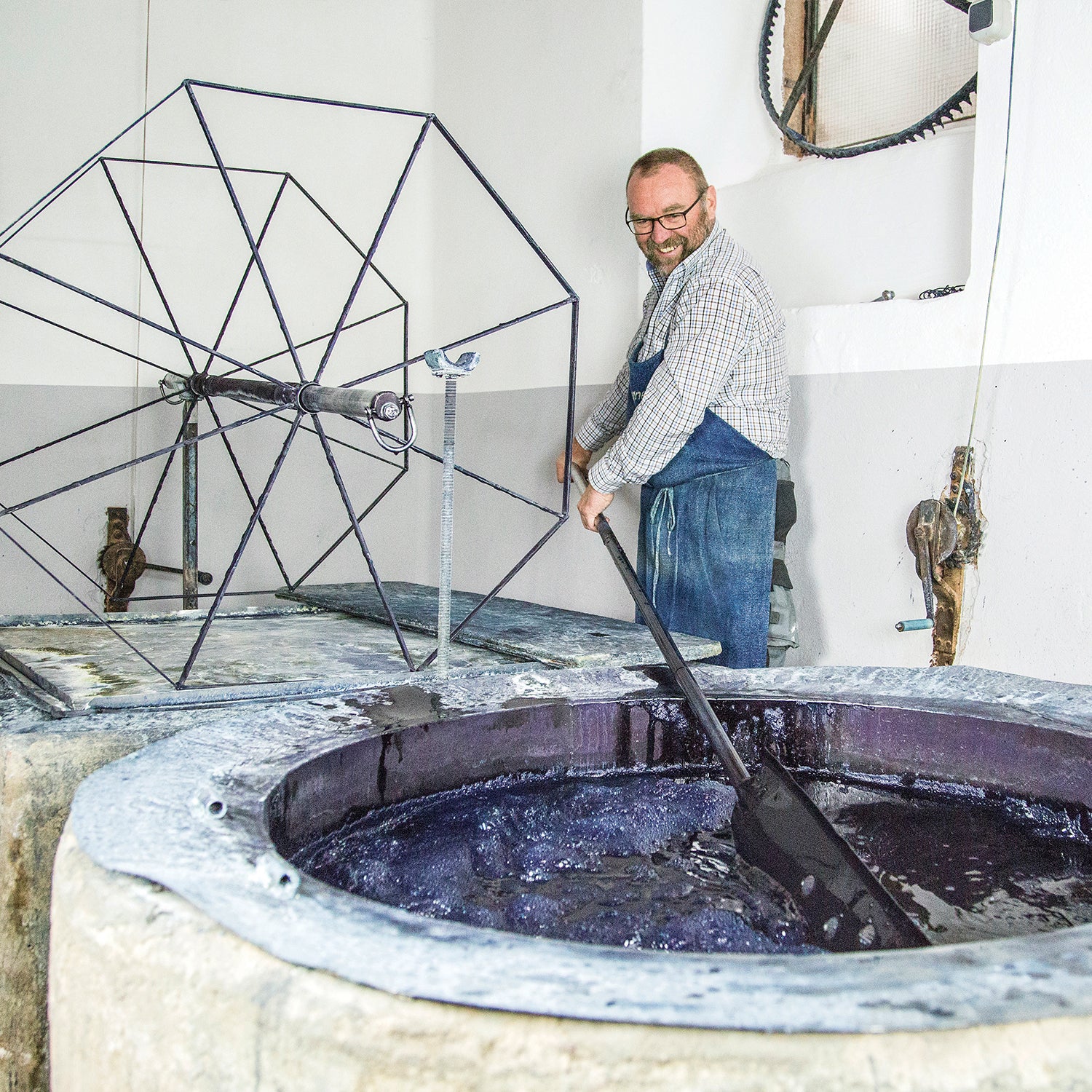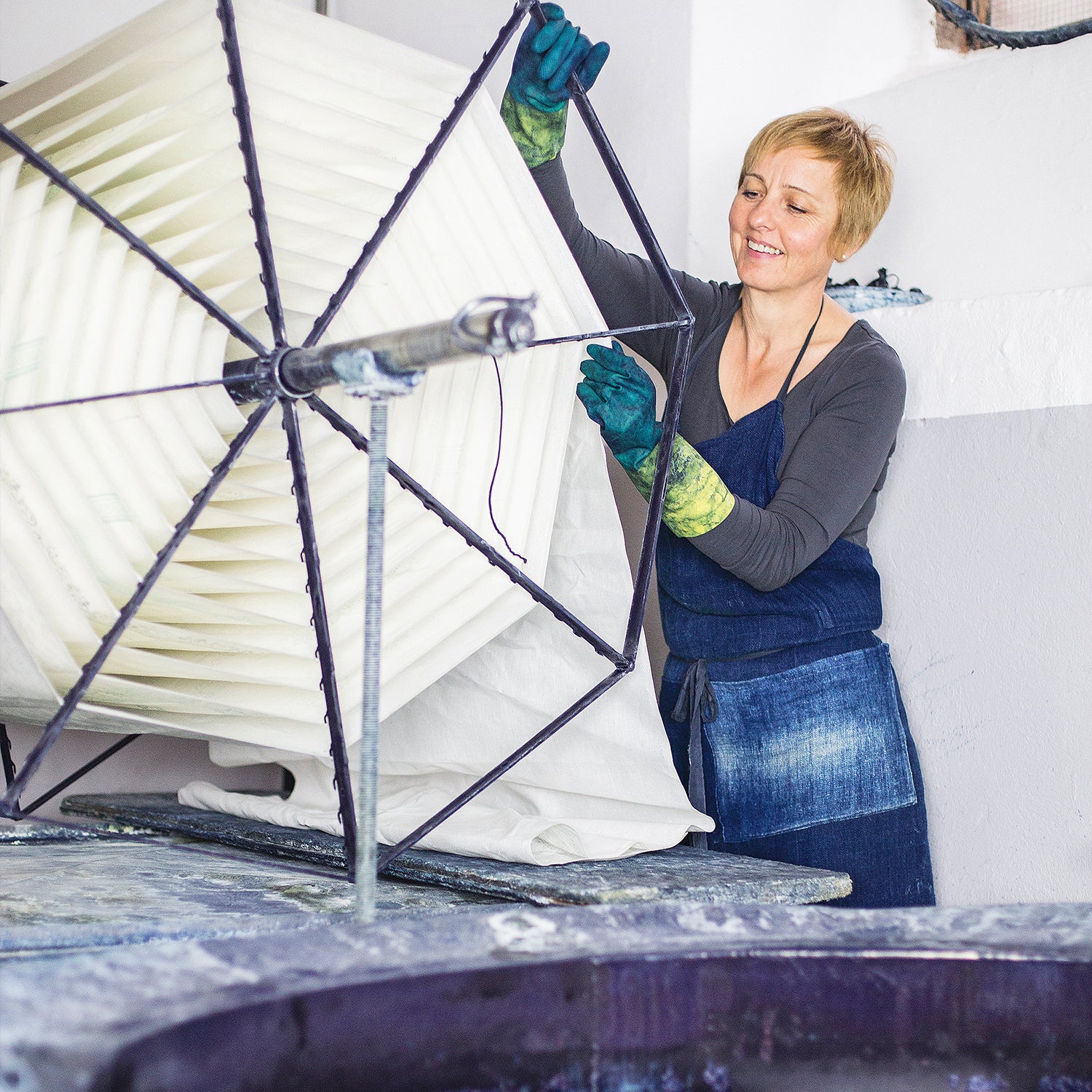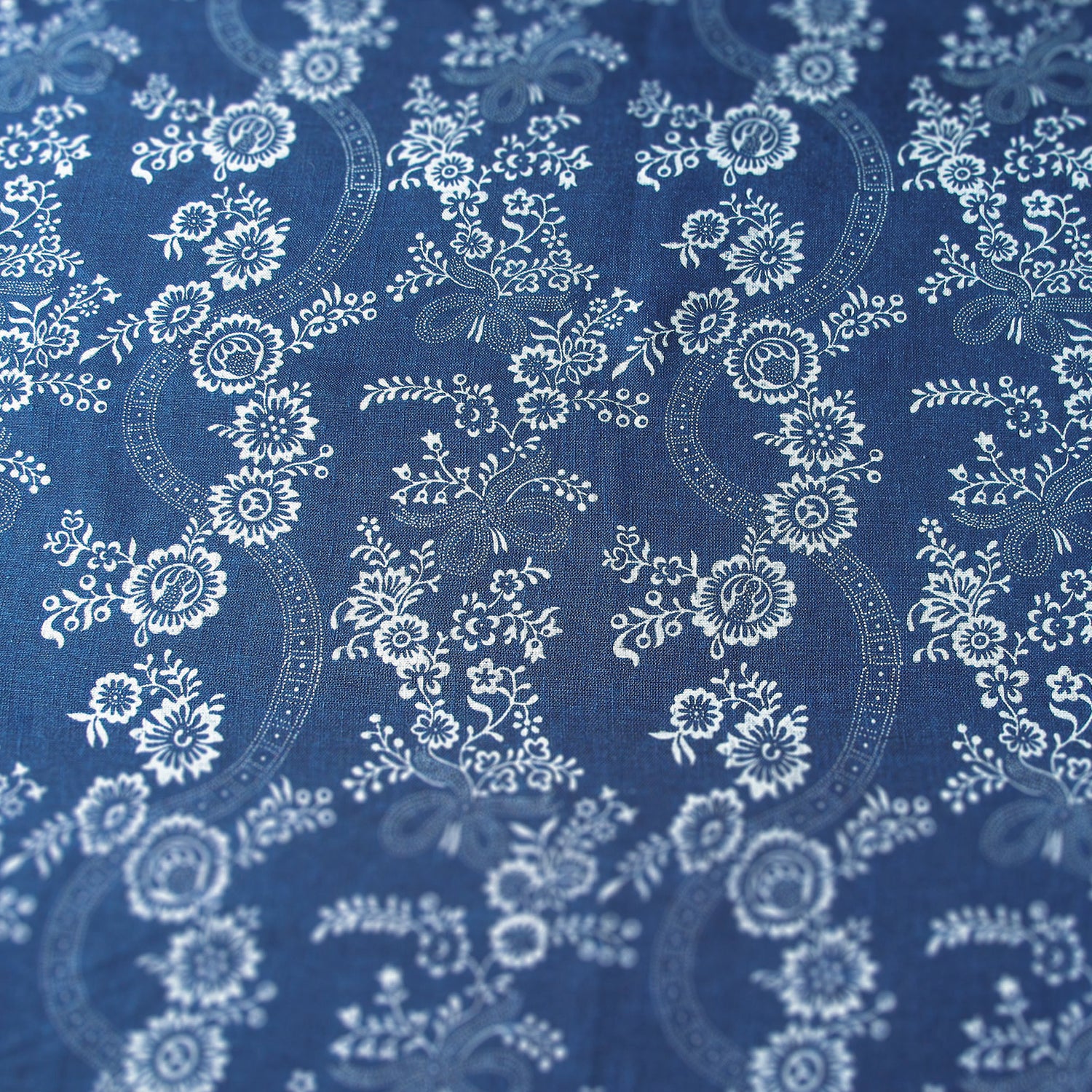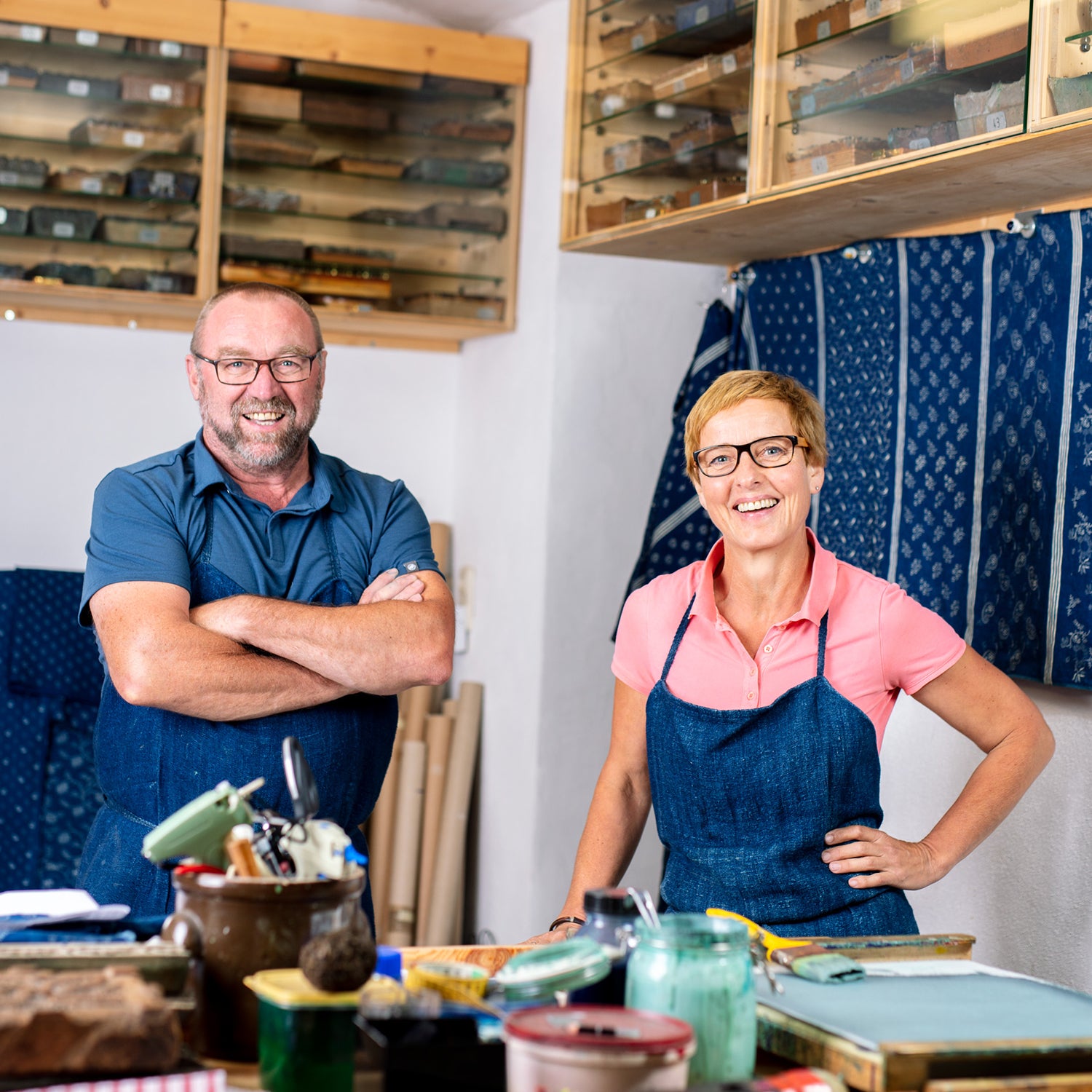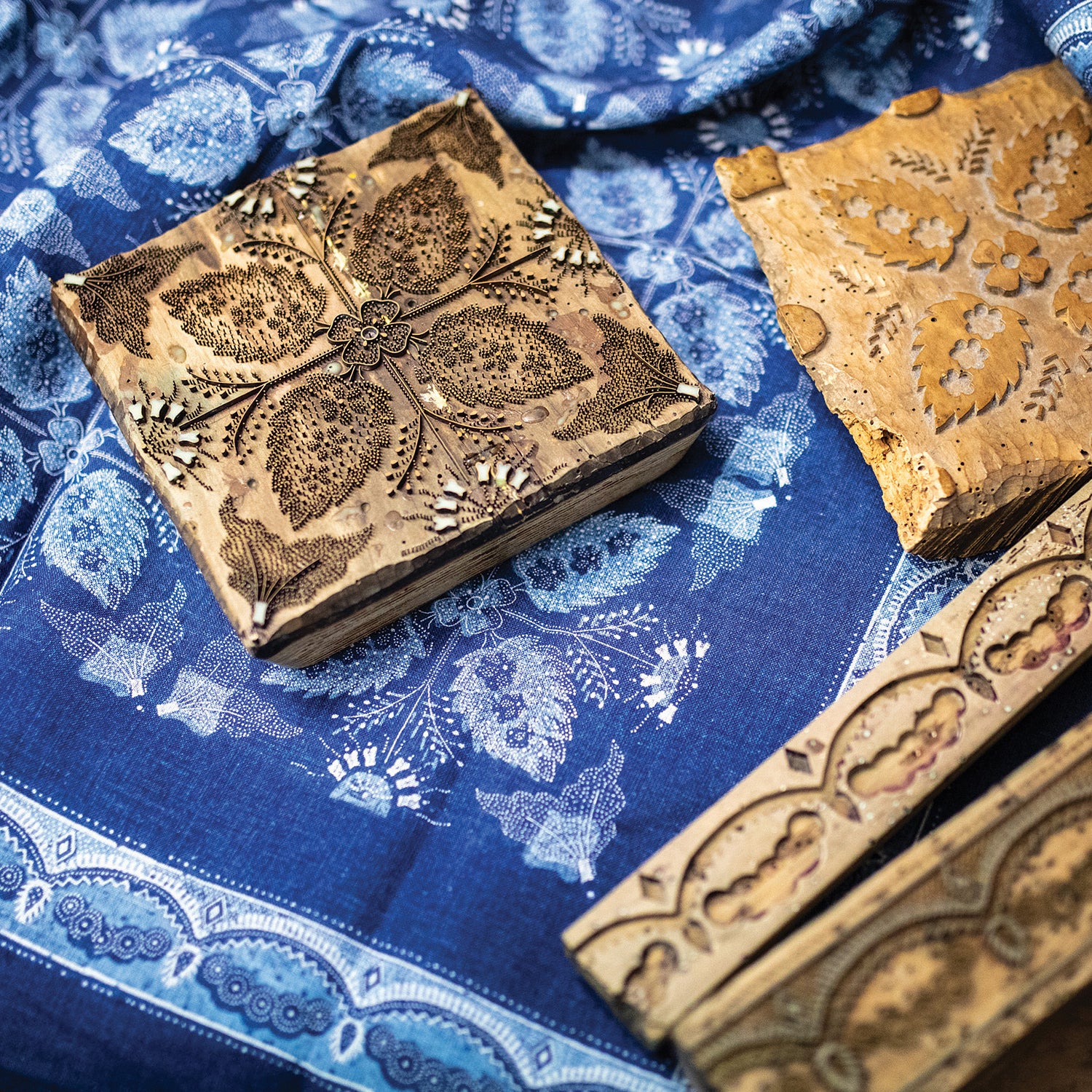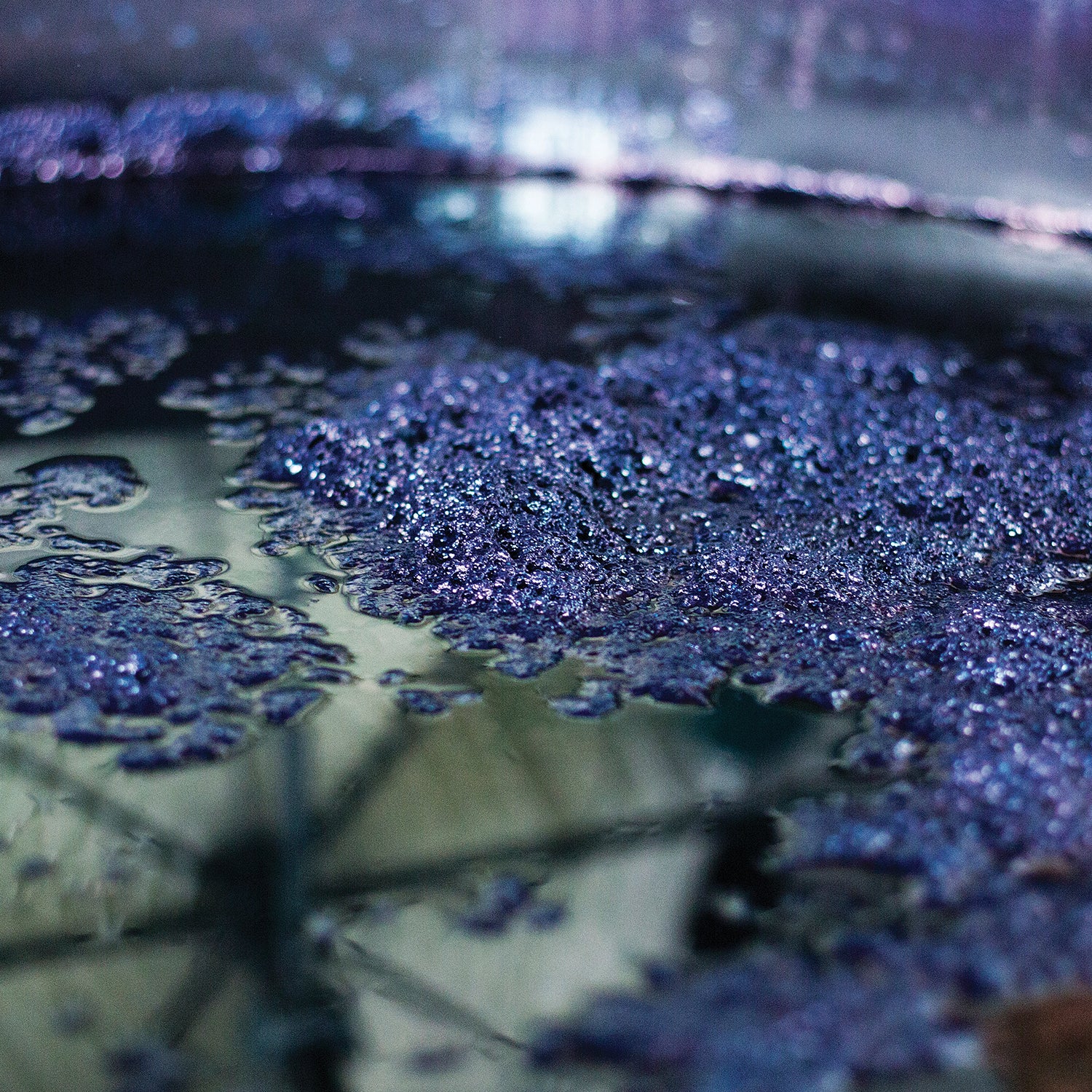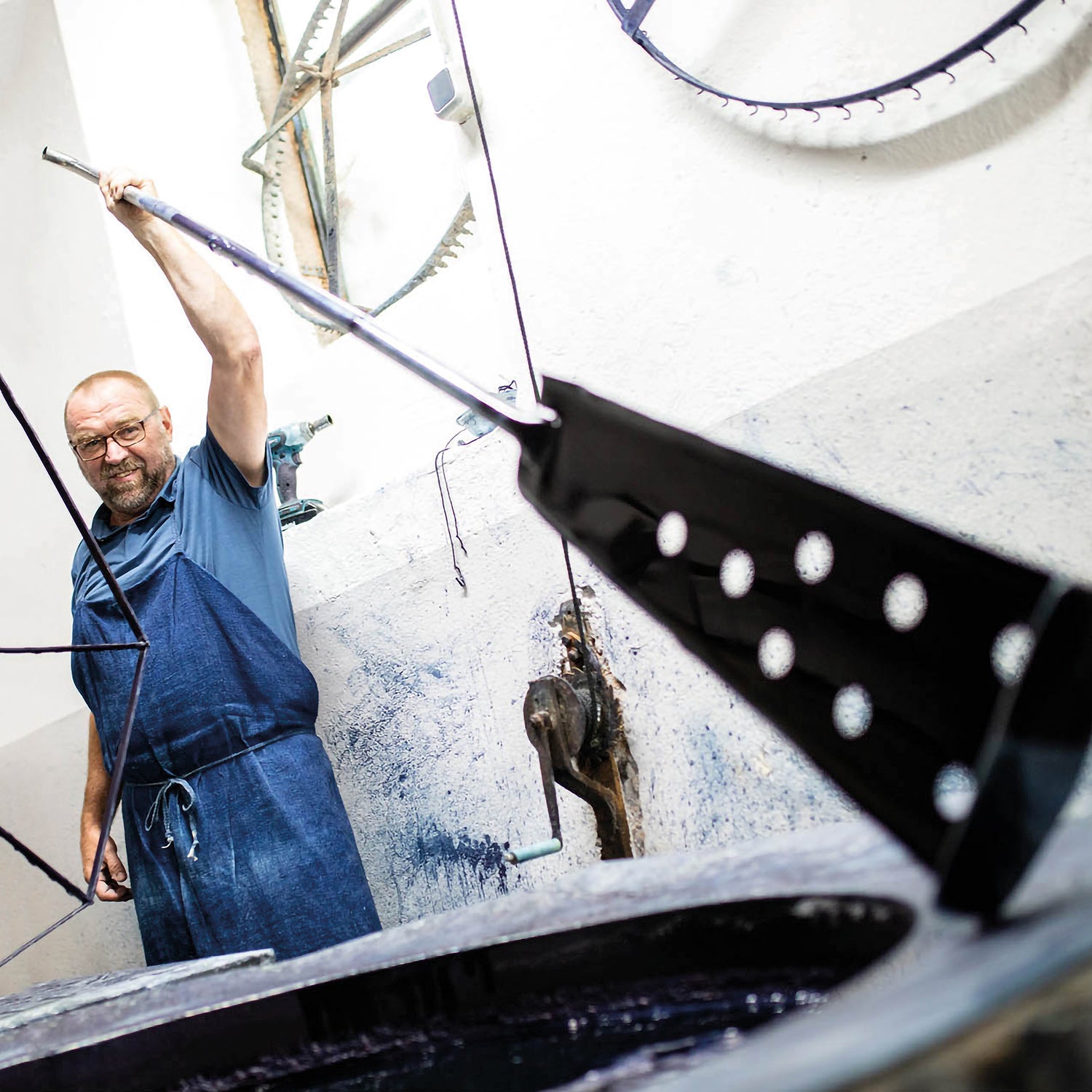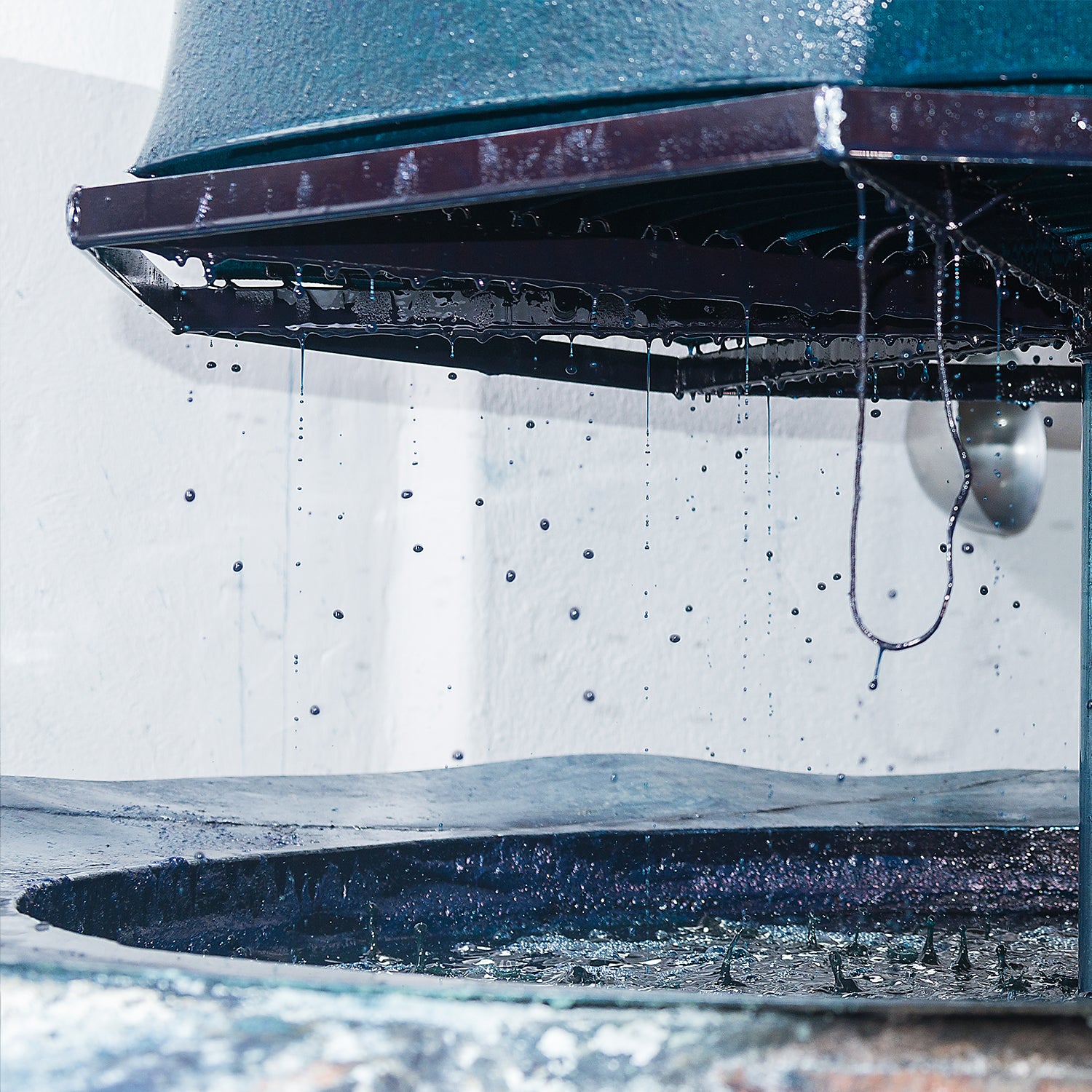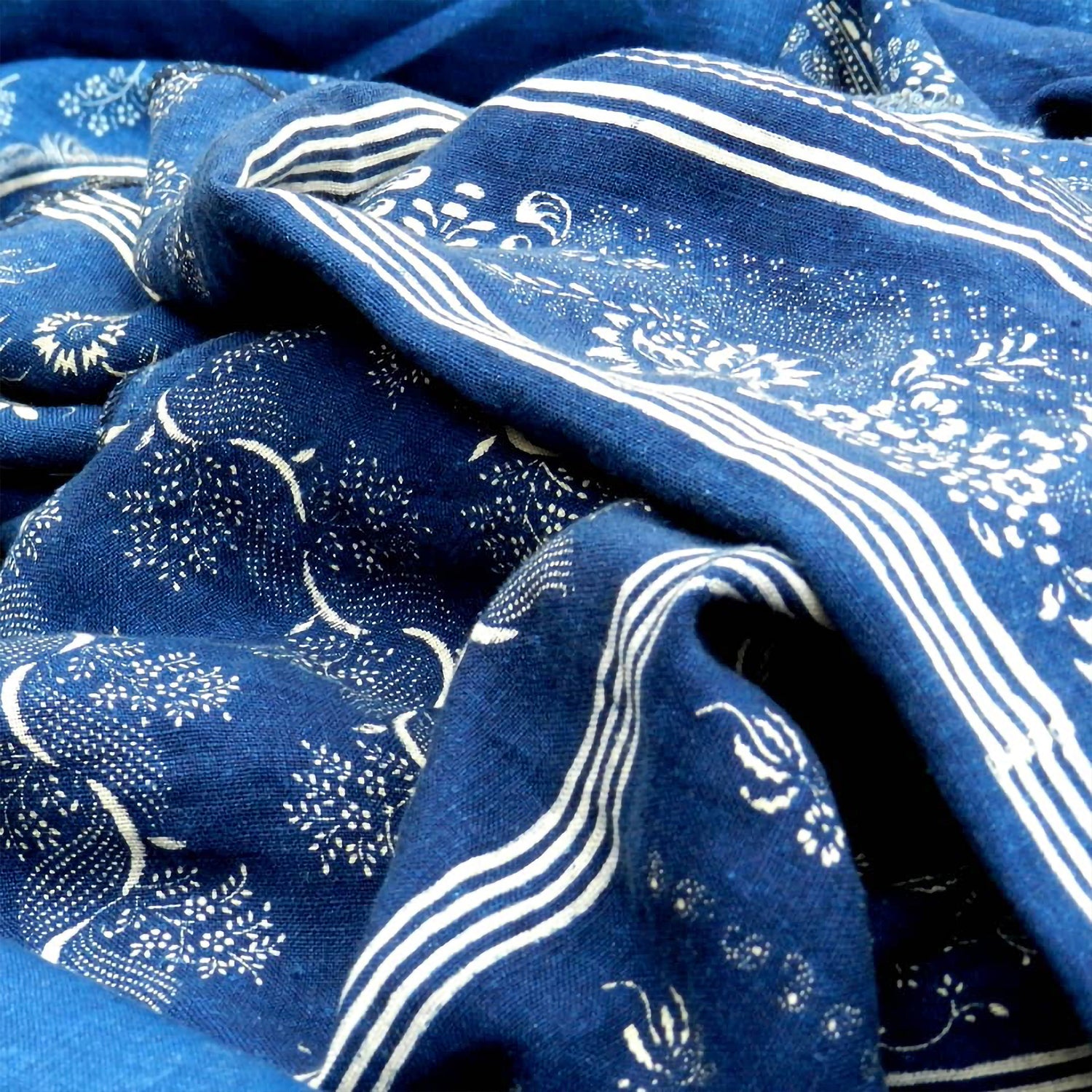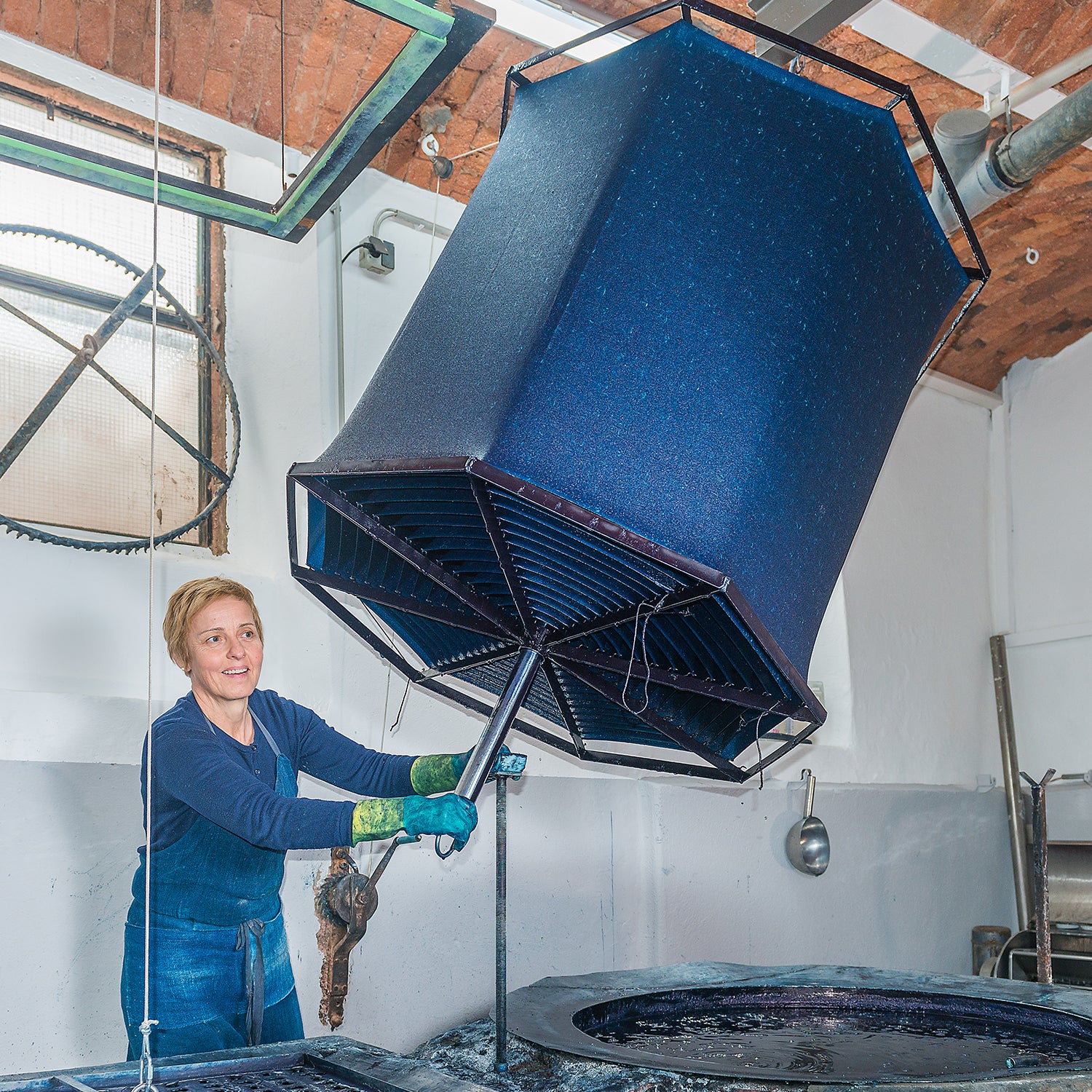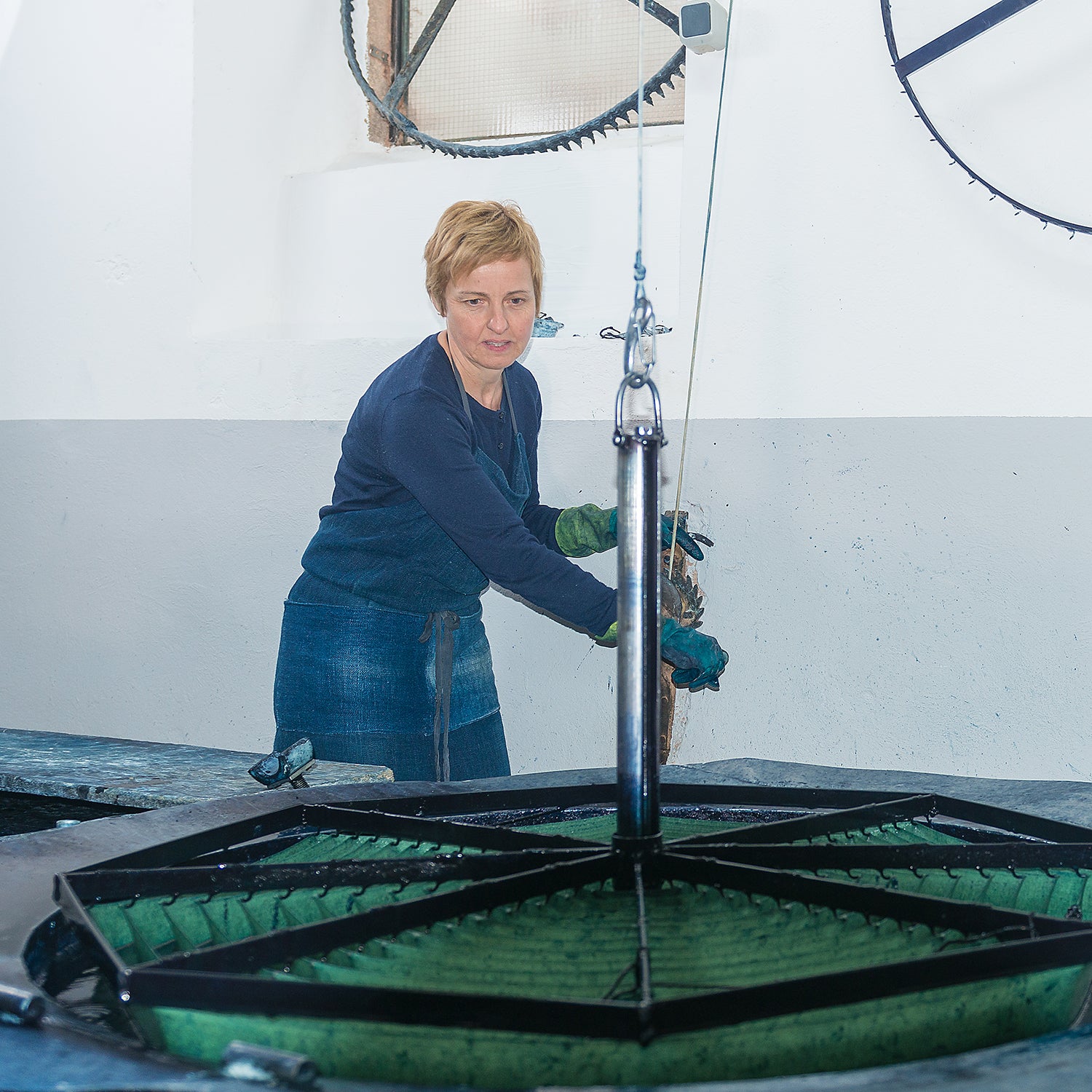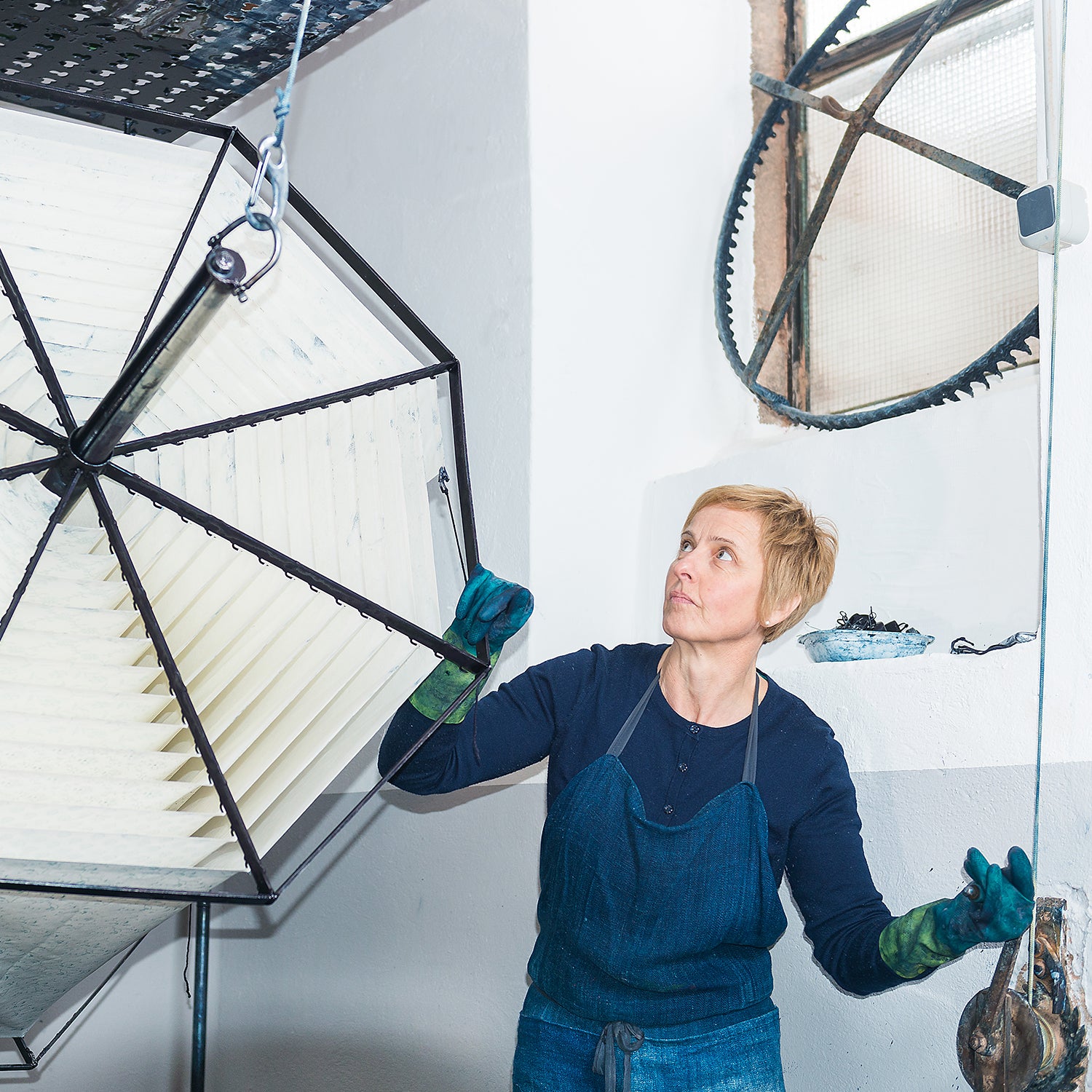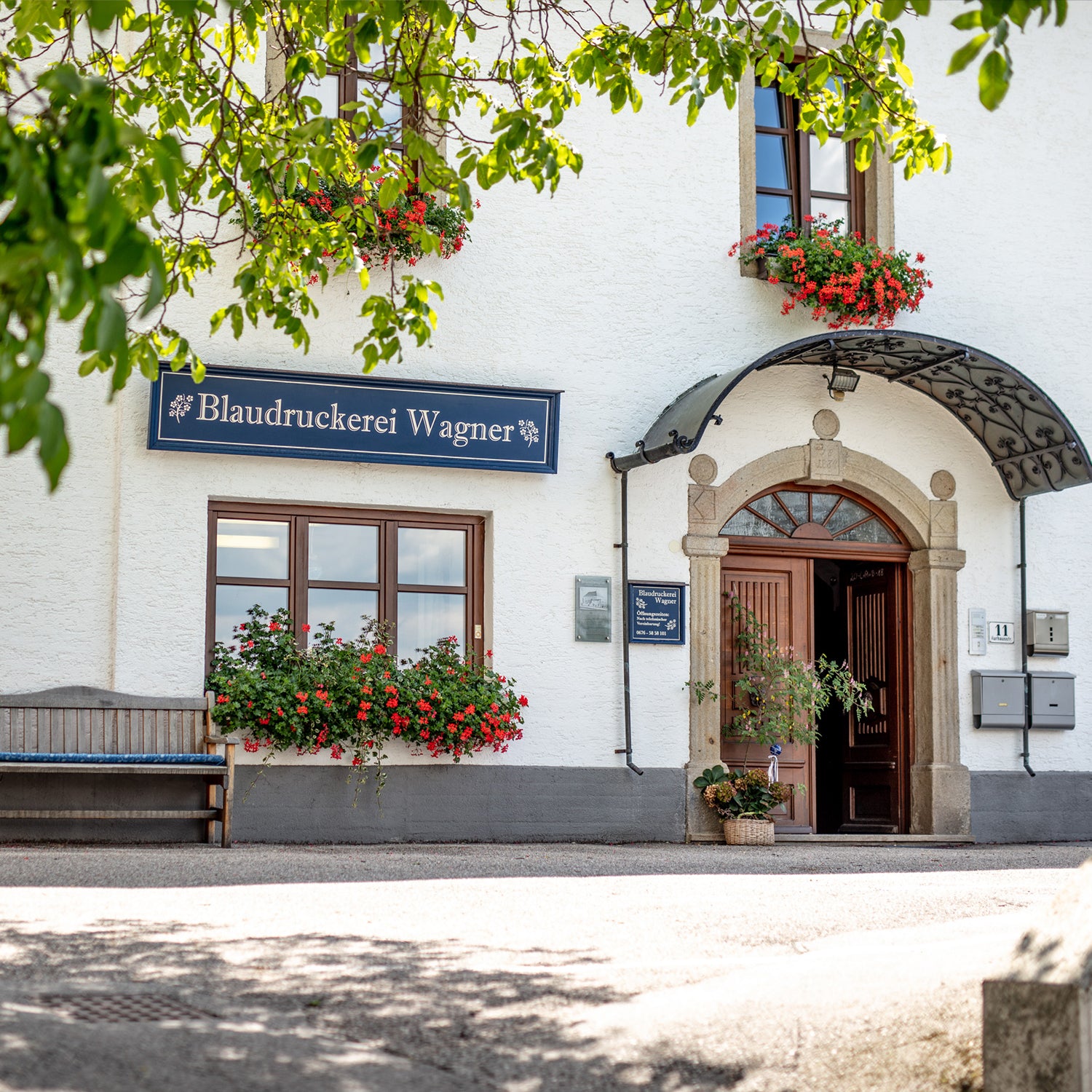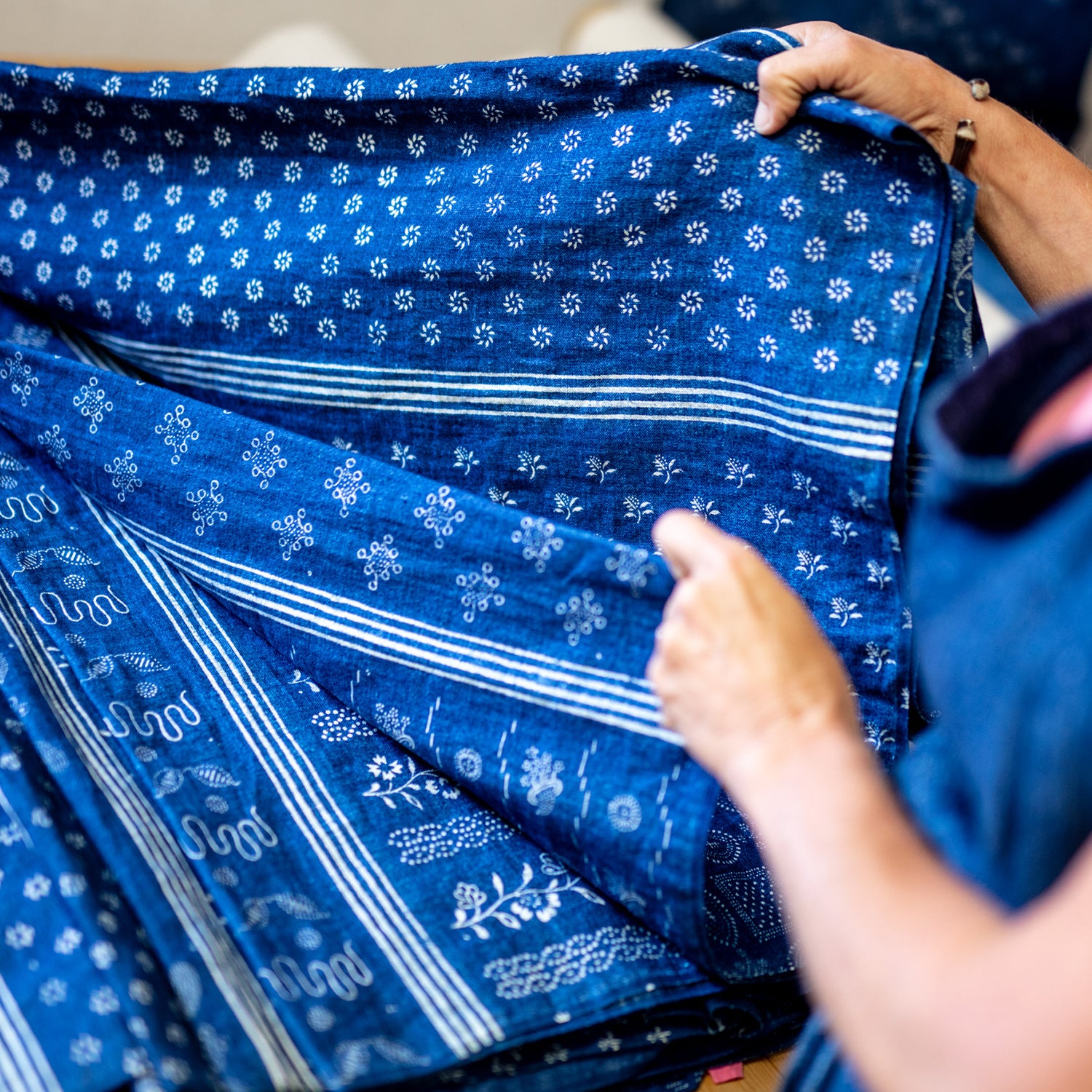Austria, Blaudruck Wagner / Karl and Maria Wagner, Blaudruck
The Mühlviertel region in northern Upper Austria has always been associated with linen and the complex and time-consuming technique of blueprinting. During the 18th and 19th centuries, artisans and craftspeople used to travel abroad to learn blueprint techniques. They documented their routes in travel books, formed guilds, and exchanged patterns with other practitioners. Amongst them was Karl Wagner Senior who established in 1878 a blueprint workshop that is currently run by the fourth generation: Karl and Maria Wagner. Their work is still partly based on the travelling book written by the first Karl during his journeyman years, and their collection of up to 250-year-old handmade wooden blocks and patterns presents a unique and extensive variety of local designs. They not only renovated and restored their original blocks and engraved new blocks to experiment with innovative patterns, but also revitalised the almost forgotten and elaborate technique of two-tone blueprinting, which requires a lot of precision. To apply the designs on to the cloth, Karl and Maria use their handcrafted wooden blocks and, depending on the desired depth and intensity of blue, the dyeing process can take up to 4 hours and requires up to 9 or more dips into the indigo vat. When textiles are removed from the vat and absorb oxygen from the air, they change from yellow to green to blue. There’s an idiom in German common language that refers to this moment: ‘Ein blaues Wunder erleben‘ (literally, 'to experience a blue miracle').
To follow the story of Blaudruck Wagner, find them on social media here.
Share
